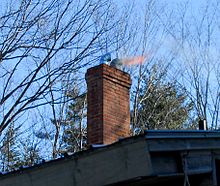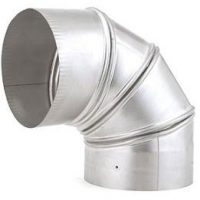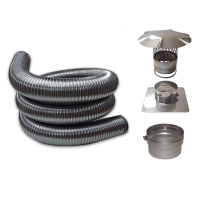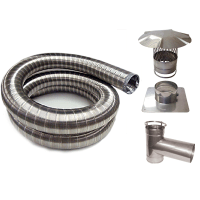On average, there are almost 27,000 residential structure fires caused by chimneys, chimney connectors and fireplaces annually, representing losses of well almost $128 million annually. If you haven’t seen one before, a chimney fire in action can be impressive.
Some of the early warning signs that you are experiencing a chimney fire include thick smoke, a popping sound and an intense smell. They can be quite spectacular with flames shooting out of the top of the chimney but there are others that are more subtle and burn slowly. However, the dangers are still present because of the high temperatures that they can reach and damages that they can cause to the structure. With regular, annual chimney cleanings that remove the creosote build-up, chimney fires are entirely preventable.
One of the signs that you might be having a chimney fire is the high temperatures at which it will burn (around 2000°F) which can melt the mortar, crack its tiles, cause liners to collapse and damage any masonry materials located on the exterior. In many cases, a phenomenon called thermal shock takes place which cracks the tiles and shifting the mortar. This is extremely serious and you should be call 911 immediately.
With pre-fabricated, factory-built and metal chimneys, it’s harder to detect a chimney fire. Factory built, metal chimneys that are capable of withstanding flue temperatures up to 2100°F without sustaining damage. Therefore when a chimney fire occurs with these types of chimneys, conditions, they may still sustain damage. When pre-fabricated, factory-built metal chimneys are damaged by a chimney fire, they should no longer be used.
Wood stoves are also designed to withstand smoldering fires. However, the connector pipes that run from the stove to the chimney cannot withstand the high temperatures produced during a chimney fire and can bend and even separate from the vibrations caused by a fire. If they have been damaged by a chimney fire, they must be replaced.
If you’ve just moved into a home and you’re not sure if it already had a chimney fire, here are some of the signs. The creosote in the fireplace will have a honey comb pattern to it, the damper, or smoke chamber will be warped (factory-built metal chimney), the flue tiles will be cracked or have pieces missing, the rain cap will have discoloration, the roofing materials and exterior masonry will be damaged or cracked.
To be safe from a chimney fire, install a stainless steel chimney liner with insulation.

 Chimney Fire
Chimney Fire




